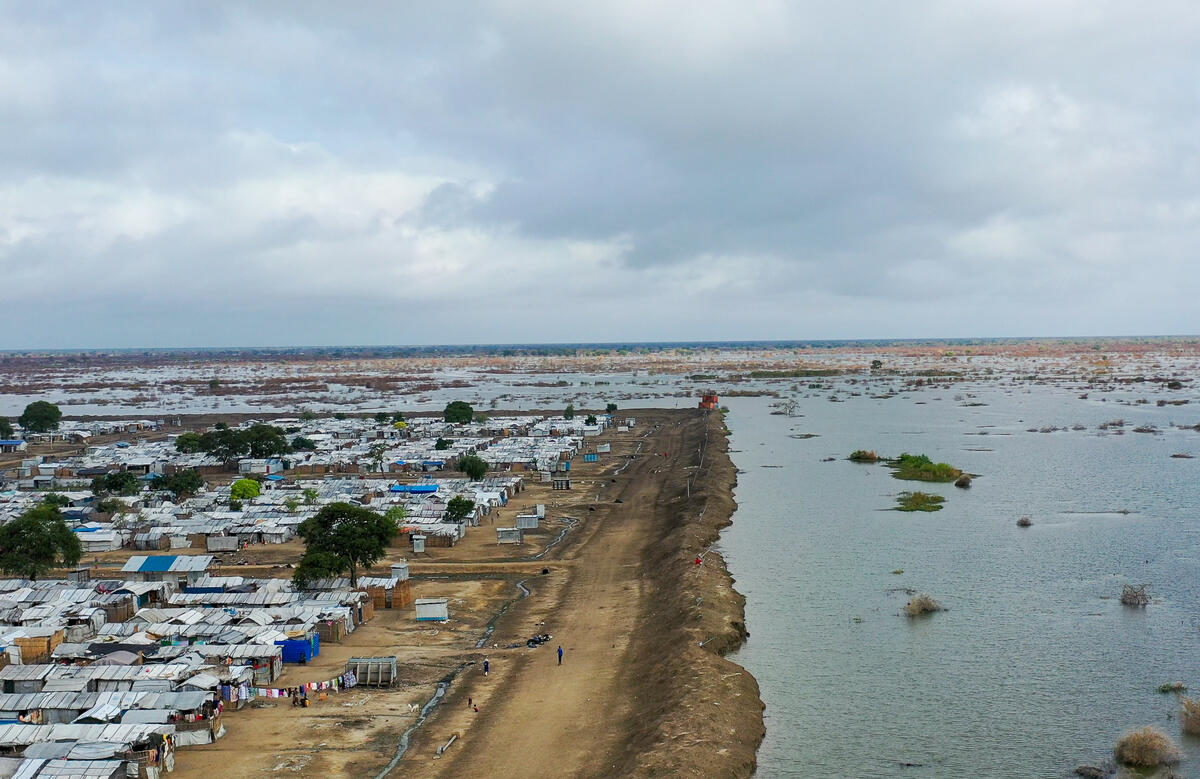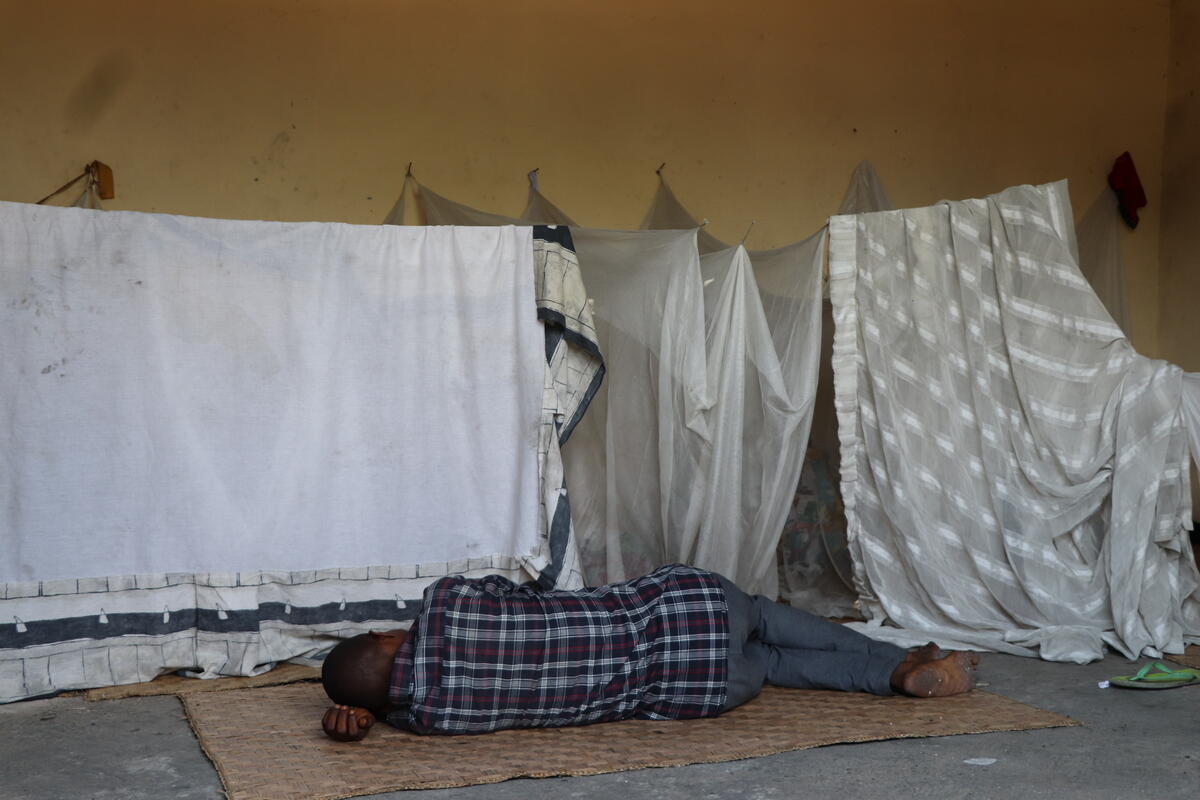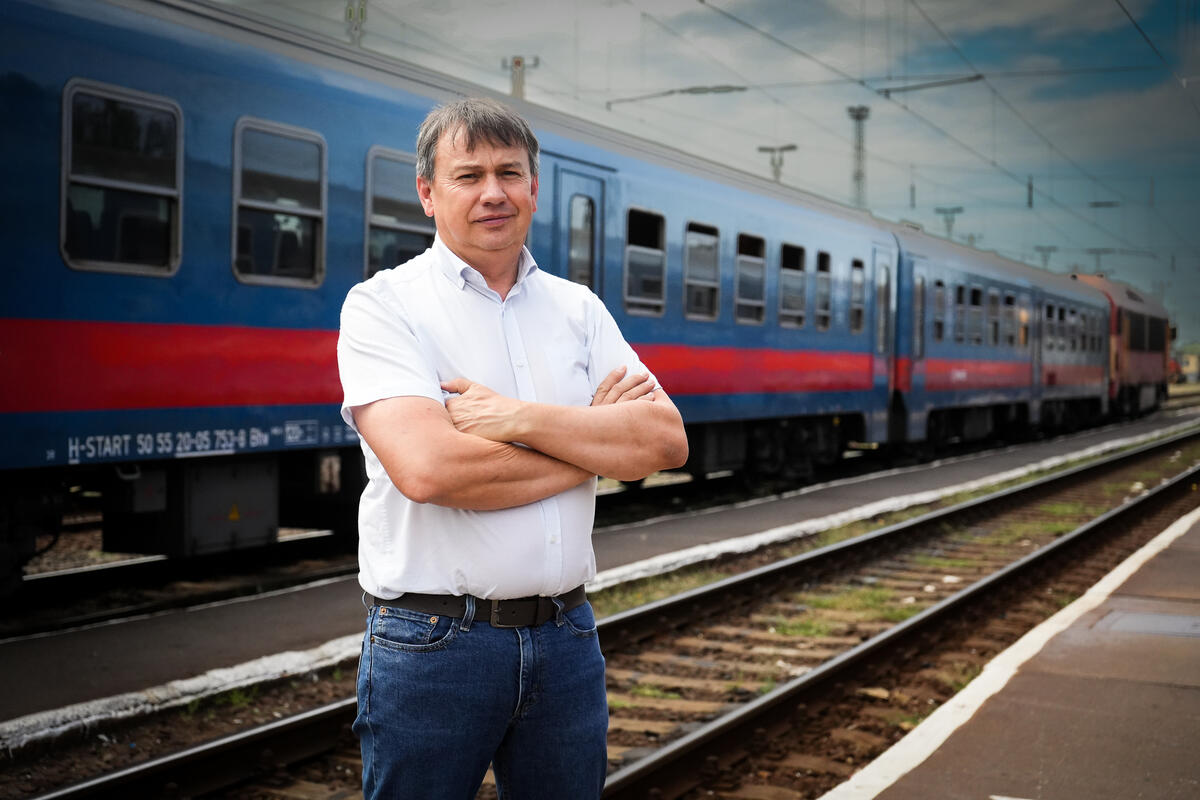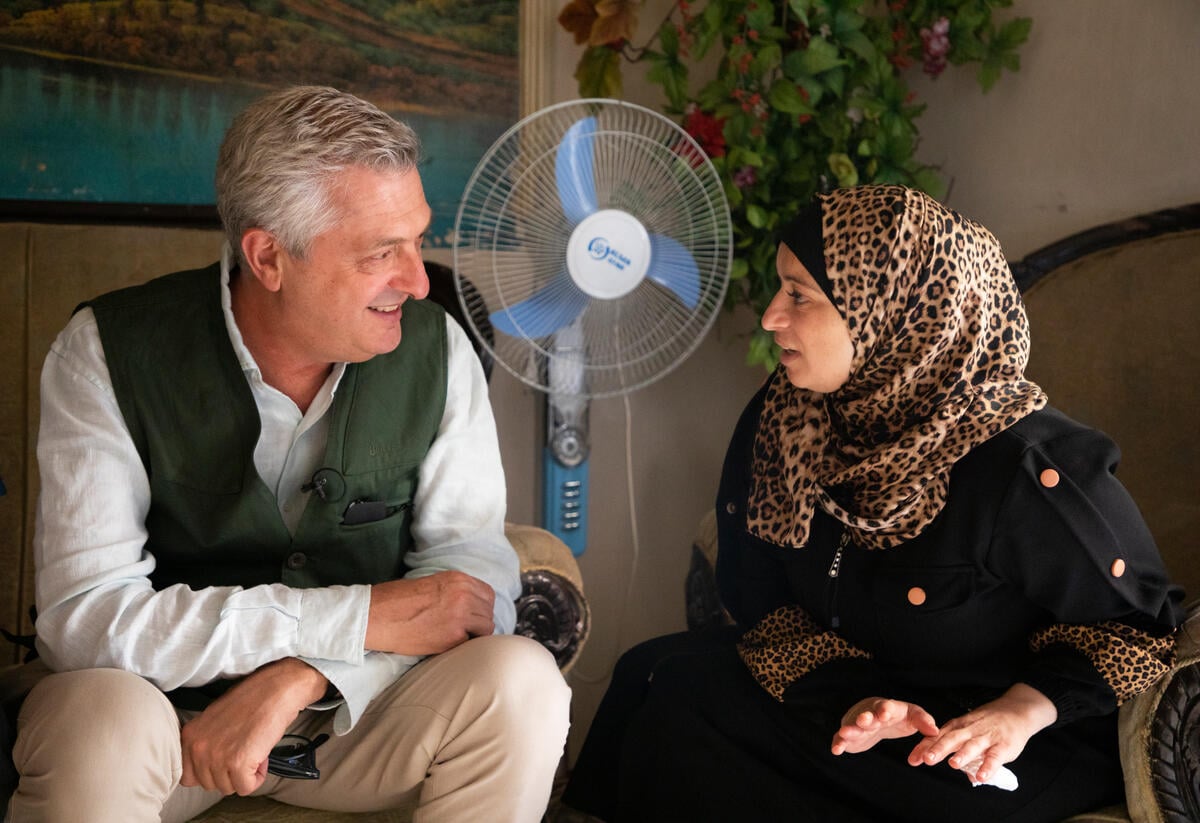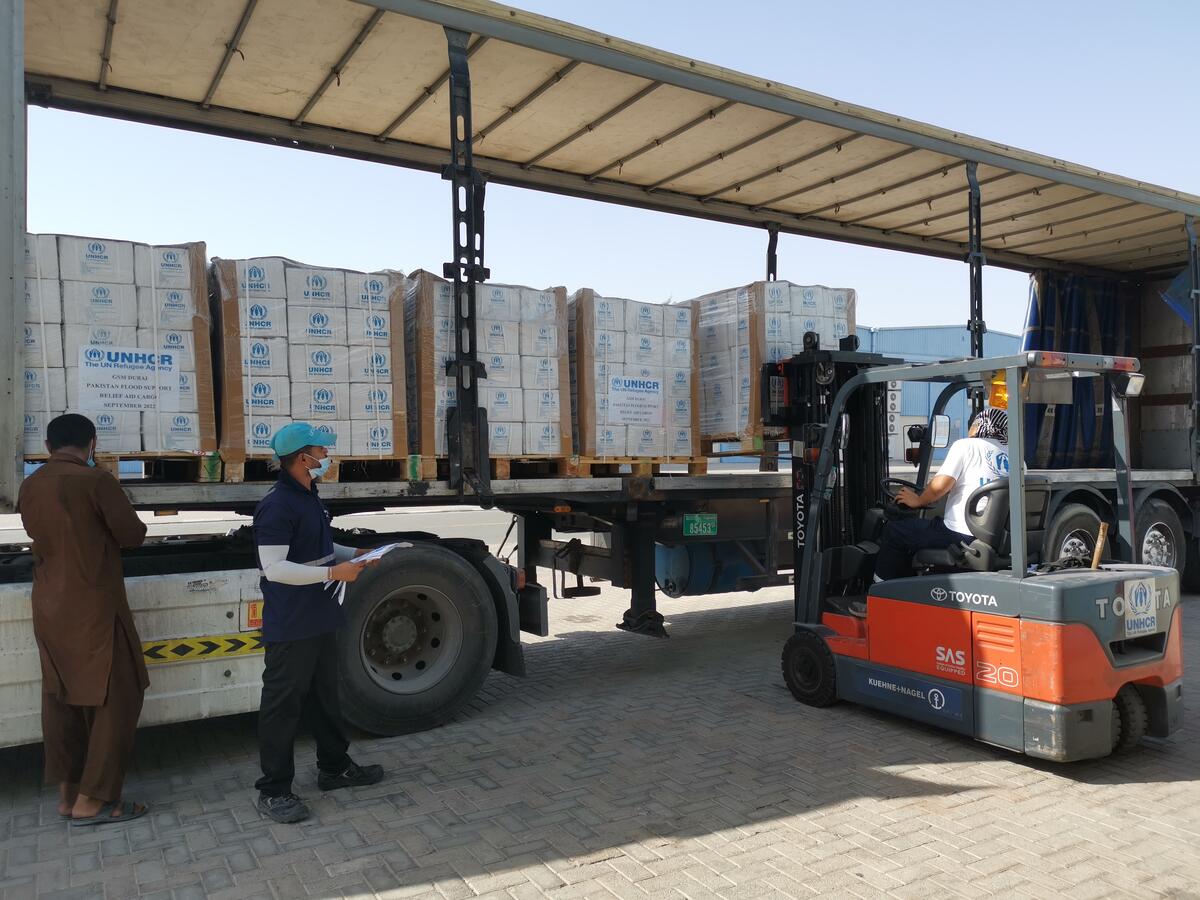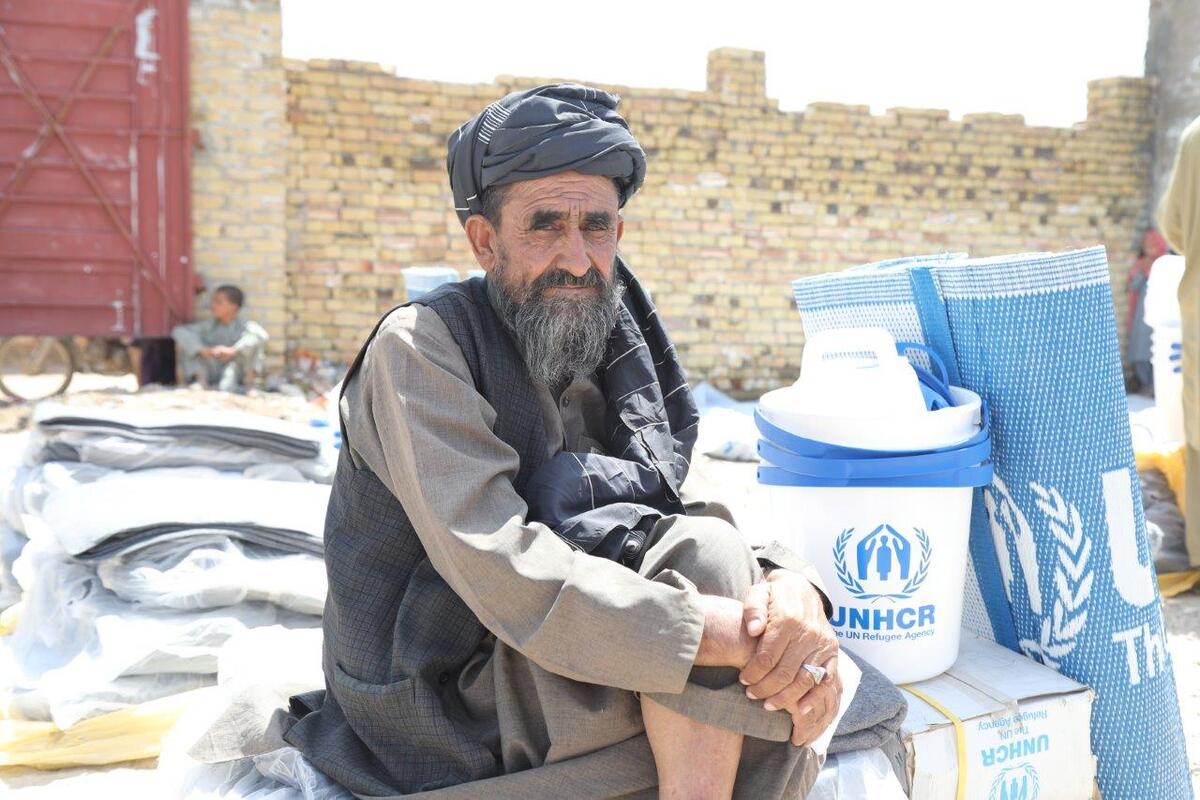Swiss agency helps UNHCR build homes in Montenegro
Swiss agency helps UNHCR build homes in Montenegro

PODGORICA, Montenegro (UNHCR) - Sipping freshly-brewed coffee in the Vukovic family's sunny kitchen, one can hardly guess that they are refugees. Their apartment in the Montenegrin coastal town of Tivat, one of many built for displaced people across the country, is spacious, clean, neat and feels just like home.
But Vukosav and Gordana haven't always lived like this. After they fled from war-torn Sarajevo in 1992, they lived for six years under appalling conditions in one of many collective centres in what was then the Federal Republic of Yugoslavia and is now the State Union of Serbia and Montenegro.
In 1998, the Vukovics were identified as one of the vulnerable cases eligible for housing constructed by the UN refugee agency and the Swiss Agency for Development and Cooperation (SDC). The family jumped at the chance for a fresh start.
"Although the flats are owned by the municipality, this is now my home and my freedom," says Gordana, adding that the family chose to stay in a community that offers concrete possibilities of meaningful integration and a safe and peaceful environment for their two children. Gordana's eldest daughter Sladjana is now 12 and attending fifth grade in the local school.
UNHCR's involvement in the shelter project started in 1992, when it funded the construction, rehabilitation and maintenance of collective accommodation in Montenegro for refugees from Bosnia and Herzegovina and Croatia.
By 1999, under agreements reached with the Montenegrin Commissariat for Refugees and Internally Displaced Persons (IDPs) and municipal authorities, UNHCR had constructed eight "full housing" refugee settlements in the municipalities of Kolasin, Niksic, Podgorica, Berane, Plav, Rozaje, Herceg Novi and Tivat. Another group of refugees benefited from "self-help" projects where they used donated materials, blueprints and professional advice to build their new homes on their own.
"Both models have been and still are extensively implemented throughout Montenegro," said Rudolf Urs, who heads SDC, one of UNHCR's principal and long-term partners in the project. "We joined UNHCR as a partner in 1994, first in projects related to the care and maintenance of the collective centres. Since then, our relationship has grown and today, as strategic partners, we work together on housing and self-help projects."
The full housing projects for refugees in Montenegro, due to its complex needs in relation to construction plots, infrastructure, urban planning and necessary permits, require intensive and broad coordination, especially between the government, represented by the Montenegrin Commissariat, the local authorities, UNHCR and SDC.
In one of the ongoing programmes in Berane municipality, northern Montenegro, 18 out of 20 housing units now under construction will be handed over to refugee families who will pay token rent to the municipality. The remaining two apartments will go to local social cases. Besides providing appropriate and long-term living space for refugees, the project will also free up the local collective centre for closure.
In such projects, the Montenegrin Commissariat helps to select beneficiaries, and support and facilitate citizenship applications by refugees benefiting from such local integration projects. It also exempts from taxes all equipment, materials, goods and services provided or funded by SDC or UNHCR, so that the committed funds can have maximum impact.
At the same time, the municipal authorities are obliged to provide an appropriate construction site, issue the building permits and bear all the costs related to the necessary approvals, taxes, fees, etc. The municipality also finances the connection of the building with public infrastructure, guarantees the access to, and if necessary, increase the capacity of the primary electrical, water and sewage installations.
In the case of the Berane project, UNHCR contributes financially and leads the joint committee to select the neediest candidates to benefit from this programme.
The SDC is contributing more than 300,000 euros, as well as providing the entire architectural and construction elaboration of the project, and controlling the public bidding procedure and execution of construction works.
"We have witnessed a rare process - a successful transformation of an implementing partner into a full-fledged donor," said Sajal Gupta, who heads UNHCR's office in the Montenegrin capital, Podgorica. "More importantly, this has been achieved at a time when UNHCR's assistance programmes in Montenegro are phasing out and we continue to advocate more substantial and more intense involvement of the international development actors."
The other model - "self-help" - is implemented throughout Montenegro, wherever refugees have purchased a building plot or need help in adapting existing housing facilities. It was originally conceived as a programme to provide durable solutions for refugees from Bosnia and Herzegovina and Croatia who opted for local integration. Many of them were of Montenegrin origin with strong family connections in the country.
Technically, in cases of new construction, materials are provided for a standard house measuring 35 square metres with approximate value of 10,000 euros. When it comes to adaptation, the assistance varies, reaching up to 5,000 euros.
"This is very demanding project on the part of the refugee receiving the assistance. Although SDC provides the blueprints and technical expertise, in each case, the families identified by UNHCR are expected to provide construction labour, storage of building materials, necessary permits, water, electricity and sewage connections," explained SDC's Urs, adding that UNHCR leads the coordination with the municipal authorities and other partners involved in the process.
One of the families benefiting from this programme is the Marcetic family, refugees from Croatia. Their house in Knin was destroyed and Milorad, his wife, daughter and son decided to apply for Montenegrin citizenship. They found and purchased a construction site in the village of Cerovice, not far from Podgorica. After receiving construction material and technical advice, Milorad started work with help from relatives and friends.
"I expect that by next spring my family will have a decent house and that we will be able to move in. People from SDC and UNHCR helped a lot. Without them this would be almost impossible to achieve," said Milorad, proudly showing his half-completed house.

Still, the Marcetics and the Vukovics remain the fortunate minority among 13,399 refugees from Bosnia and Herzegovina and Croatia currently registered in Montenegro. The unresolved issue of housing continues to be one of the biggest obstacles for refugees opting for integration in Serbia and Montenegro. And since most of the people remaining in collective centres are IDPs from Kosovo, there is a need to adapt the eligibility criteria and include vulnerable IDPs in these assistance programmes.
Given the fact that the most of them wish to integrate locally, various activities under the housing and self-help programmes will help refugees to obtain permanent accommodation for their families and a sound basis for all other aspects of their full social and economic integration. Achieving this ultimate goal will depend on the will of donors to continue their support for successful humanitarian alliances such as the one between UNHCR and SDC in Montenegro.
By Andrej Mahecic
UNHCR Belgrade


